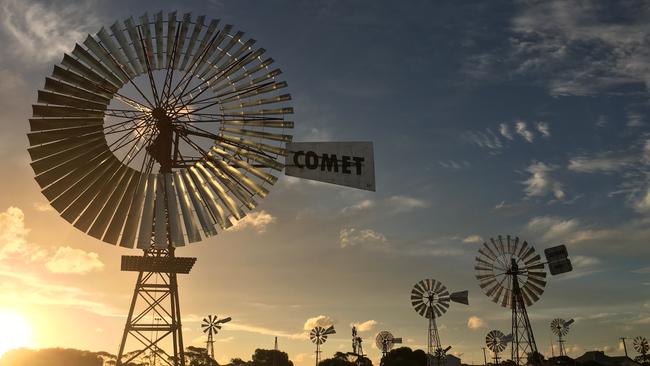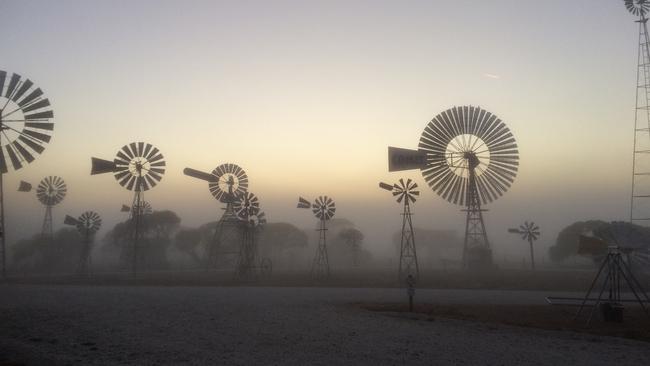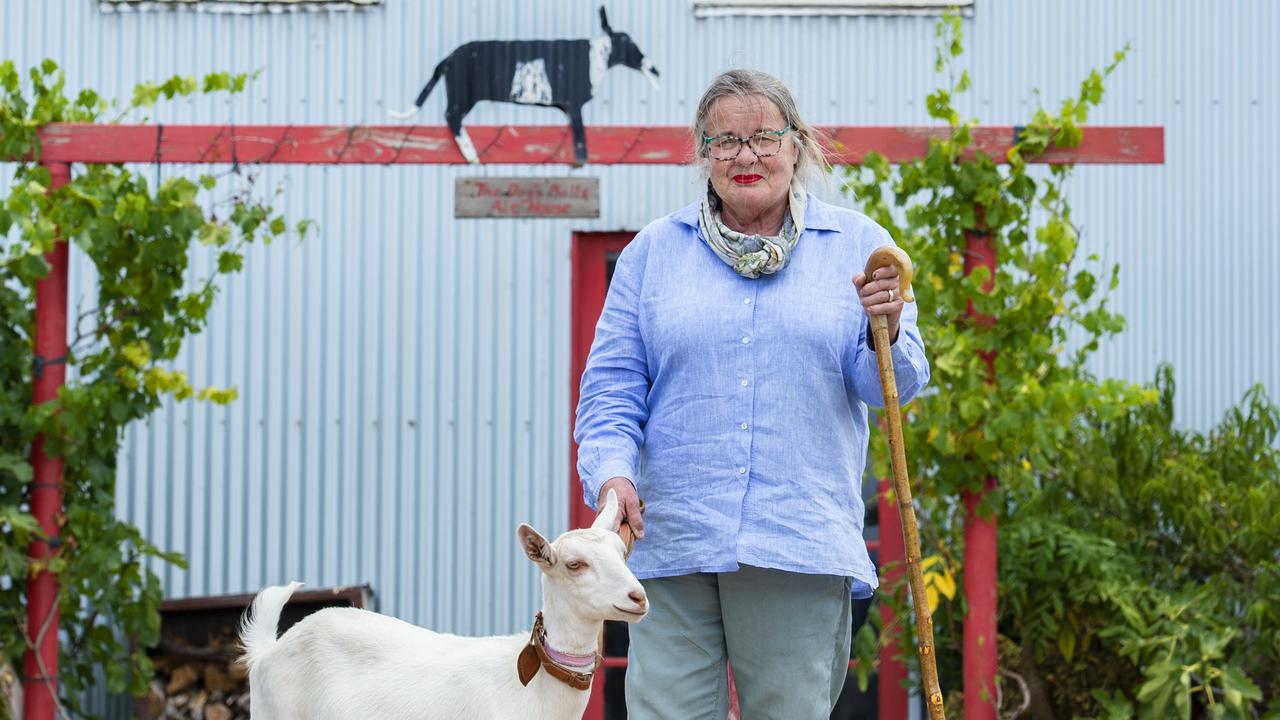Small town tilts at windmills and starts tourist attraction
SINCE opening a year ago, Penong’s Windmill Museum has attracted about 40,000 visitors to the remote town in South Australia’s grain-growing belt on the edge of the Nullarbor.

FOR as long as Bob Oats can remember, windmills have dominated the landscape around Penong.
“If it wasn’t for windmills, the town wouldn’t have been settled, no doubt about it,” says Bob, a former grain and sheep farmer.
Such is the remote location of the town, on the western edge of South Australia’s grain-growing belt on the edge of the Nullarbor, there is no piped water.
“There never has been,” Bob says. “Every house has always relied on windmills for underground water.
“There’s 25 of them about 1.5km from the town on a flat area in a gully and from there it’s pumped up to the houses.”
But in recent years, Bob says, the advent of solar panels has made the whirling workhorses redundant, leaving the mills to fall down and be buried by time.
It was this moment in history — the certain demise of the windmill — that prompted Bob and his mate, Tim Hardy, to rally the town, throw caution to the wind and create the Penong Windmill Museum.
The museum is as much a testament to the history of the region and rural Australia’s reliance on the windmill as it is a project on how to flip the fortunes of a country town.
Opened last September, the museum so far features 20 restored mills.
The trophy piece is a Comet windmill they have called Bruce, which Bob claims is the largest in Australia with a 35 foot, or 10.6 metre, diameter fan.
“We picked Bruce up 400km north of here and it used to pump water for steam trains from Adelaide to Perth,” says the second-generation Penong resident, who has lived his whole life in the town.
“It was destroyed and we had to remake it.”
The smallest, also a Comet, is 1.8m.
There are Southern Cross varieties, Metters, a Riddle with a wooden fan and, so far, the oldest is an Alston, circa 1920s.
“We’re working on a Horwood Challenge that also has a fan made of wood and it was made in 1898.
“We went 600km to get that one,” he says.
Bob, Tim and the community have travelled far to source windmills — all donated.
“There’s one we’ve still got to get that is 1600km up the road on the way to Alice Springs,” he says.
Luckily Bob is a truck driver, subcontracting to the Cheetham Salt works, and so has lent his semis to haul the obelisks.
But creating the museum has not come cheap, and the town has raised almost $40,000 to restore the mills and secure them on site.
Bruce used 20 tonnes of concrete for its footings, all hand mixed by volunteers.
“We say it was 113 bags of concrete and 110 cans of beer,” Bob says.
One of the most impressive aspects of the project is that Tim has done much of the welding work from his workshop in the rural supplies store — all in a wheelchair.

A motorcycle accident left him a paraplegic 28 years ago.
“Bob does what an able-bodied person can do and I do what a person in a chair is able to do,” says Tim, 54, playing down his role in the project.
“Bob likes to talk me up.”
Bob says: “We have had rusted up old mongrel things and I take my hat off to Tim, he’s so capable and patient.”
It has been to the community’s benefit that the progress association approved the building of the museum.
Bob and his wife, Jill — who can see visitors arriving at the museum from the back deck of their home — estimate that since opening in September they have had 10,000 visitors every four months.
It’s a big number given the population is 75 (“including about 15 single men, in addition to 35 dogs”).
“Everyone who drives from Victoria to Perth gets there by
driving through Penong, unless they go via Darwin,” says Bob, adding that before the museum, Penong was best known for being the key Australian producer of gypsum for gyprock plasterboard.
“People would always stop to take photos of the existing windmills on the outskirts of town, but now they come into town to see the museum, and the benefit flows to the caravan park, the shop, hotel and service station,” he says.
Bob says one couple flew from New Zealand, hired a car and drove to Penong to see the museum, before returning home again.
“There are some mad keen windmill people out there,” Bob
says.
“The other day I had a lady come in and she told me that two weeks before she’d been in Paris at the Eiffel Tower and the windmill museum was much better.
“I never get sick of seeing people pull up their car and caravan to have a look.
“That’s what makes all the work worthwhile.”


